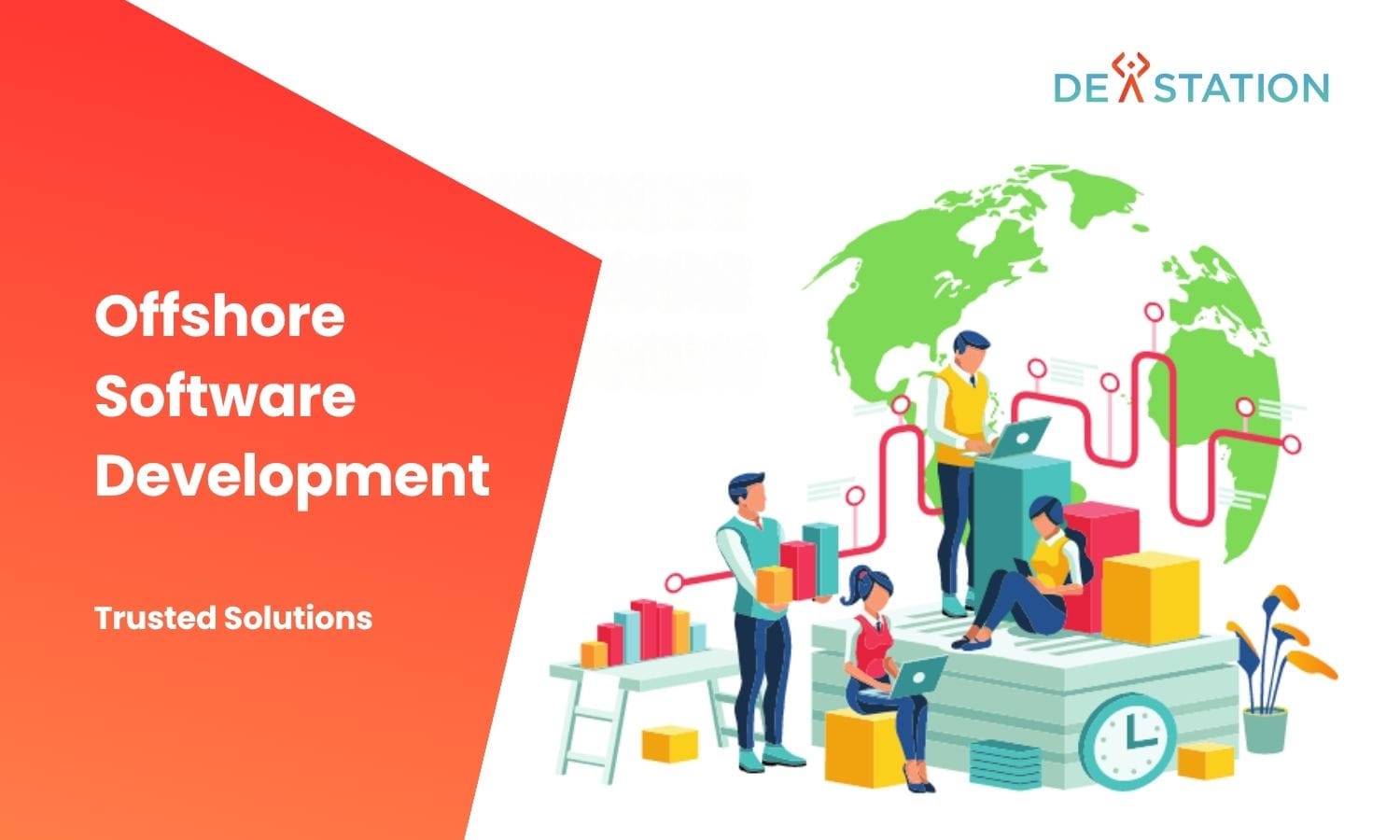Businesses today face intense pressure to adopt advanced technology while managing costs. Partnering with global teams has become a strategic move for organizations seeking specialized expertise and scalable solutions. The enterprise software market is booming, with revenues exceeding $209 billion, while developer populations grow steadily to meet demand.
Internal teams often struggle with complex projects due to skill gaps or limited capacity. This challenge drives demand for external partners who offer technical depth and proven workflows. These collaborations accelerate digital transformation by combining localized business knowledge with global technical proficiency.
Selecting the right partner requires careful evaluation. Cultural alignment, security protocols, and communication standards separate top performers from average providers. Decision-makers must balance cost efficiency with quality assurance to achieve sustainable results.
Contents
ToggleUnderstanding the Benefits of Offshore Software Development
Organizations worldwide are discovering transformative strategies to bridge skill gaps while optimizing budgets. By collaborating with specialized teams across regions, businesses unlock competitive advantages that drive growth and technological agility.
Financial Efficiency and Expanded Capabilities
Strategic partnerships reduce operational expenses by 30-50% compared to local hiring models. This approach provides immediate access to professionals skilled in emerging fields like AI and blockchain without long-term employment commitments.
Geographic diversity creates operational flexibility. Teams in different time zones enable continuous workflow cycles, turning potential coordination challenges into productivity boosters. Resources scale seamlessly with project demands, eliminating overhead from permanent hires.
Faster Results and Forward-Thinking Solutions
Seasoned partners bring tested methodologies that accelerate timelines. One logistics firm cut deployment cycles by 40% using this model, according to recent industry reports.
Key advantages include:
- Tailored systems matching specific operational needs
- Exposure to cross-industry technological breakthroughs
- Immediate deployment of certified quality assurance processes
These collaborations foster innovation through knowledge exchange, helping organizations stay ahead in rapidly evolving markets. Decision-makers gain both technical firepower and strategic insights from global experts.
Exploring Top Offshore Software Development Companies
Global tech partnerships are reshaping how organizations access specialized expertise. Leading providers combine technical mastery with cultural adaptability, offering tailored solutions across industries. This landscape features distinct players addressing everything from enterprise systems to agile startup requirements.

Industry Leaders and Their Unique Strengths
Near streamlines talent acquisition across Latin America, delivering $282K annual savings through optimized team structures. Their model includes full-cycle support from recruitment to project management, ensuring smooth operations across borders.
ScienceSoft maintains European hubs that match US collaboration standards while cutting costs by half. Certified under ISO 9001 and 27001 frameworks, they prioritize security without compromising delivery speed. This approach bridges quality expectations with budget realities.
Toptal’s elite network connects businesses with vetted professionals through a 5-stage screening process. Only 3% of applicants pass their evaluations, guaranteeing high-caliber talent for complex technical challenges. Their model proves particularly effective for specialized projects requiring niche skills.
Established leaders like EPAM Systems drive innovation through cross-industry solutions, while Globant reinvents traditional workflows with digital-first strategies. Geographic specialists such as Andela unlock Africa’s developer potential, demonstrating how regional expertise creates competitive advantages.
These providers share common differentiators:
- Proven methodologies refined through thousands of projects
- Certified quality assurance processes
- Scalable resource pools adapting to shifting demands
Key Qualities of an Offshore Software Development Company
Identifying reliable partners requires understanding what separates exceptional teams from average providers. Top performers share distinct characteristics that ensure project success while minimizing operational risks.

Technical Expertise and Experience
Evaluate a team’s proficiency with tools and frameworks critical to your project. Look for certifications in platforms like AWS or Azure, and review their work with similar industry challenges. One healthcare client reduced system integration errors by 75% after verifying their partner’s blockchain experience through case studies.
Seasoned teams bring battle-tested strategies. They anticipate roadblocks through lessons learned from hundreds of deployments. As one CTO noted:
“Our partner’s React Native mastery cut our app launch timeline by six weeks.”
| Quality Assurance Metric | High-Performance Teams | Average Providers |
|---|---|---|
| Automated Testing Coverage | 85-100% | 40-60% |
| Code Review Frequency | Daily | Weekly |
| Post-Launch Bug Rate | <0.5% | 2-3% |
Quality Assurance and Scalability
Robust QA processes prevent costly reworks. Leading teams conduct parallel testing across development stages using tools like Selenium and JUnit. A 2023 Gartner report found organizations with mature QA practices reduce post-launch issues by 60% compared to basic checklists.
Scalable models adapt to shifting demands without quality drops. Look for partners who can triple their workforce within 30 days while maintaining ISO 9001 standards. This flexibility proved vital for an e-commerce platform during peak holiday traffic surges.
Security remains non-negotiable. Ensure partners adhere to GDPR or HIPAA protocols when handling sensitive data. Regular third-party audits provide objective validation beyond self-reported claims.
Leveraging Technical Expertise and Communication
Successful global partnerships hinge on two critical factors: precise knowledge sharing and strategic alignment. When teams span continents, translating complex ideas into actionable plans becomes vital for maintaining operational cadence and meeting deadlines.
Clear Communication Across Time Zones
Time differences create both challenges and opportunities. Leading teams use overlapping hours for real-time discussions while automating task handoffs during off-periods. A financial services firm reduced deployment delays by 55% after implementing staggered meeting schedules across three continents.
- Daily standups via video conferencing tools
- Centralized documentation accessible 24/7
- Automated progress tracking in shared dashboards
Efficient Collaboration Strategies
Modern tools bridge geographical gaps when used strategically. Version control systems and project management platforms enable seamless updates across locations. One logistics company achieved 98% task visibility by integrating Jira with their partner’s workflow systems.
Key collaboration enhancers:
- Dedicated technical liaisons for cross-team coordination
- Standardized escalation protocols for critical issues
- Biweekly demo sessions showcasing incremental progress
“Our partner’s structured feedback loops cut revision cycles by 40%,” noted a tech director at a retail SaaS platform.
Cultural awareness training further strengthens partnerships. Teams that understand regional holidays and communication styles reduce misunderstandings by 63%, according to 2023 collaboration studies.
Custom Software Solutions for Diverse Business Needs
Tailored digital tools now drive competitive differentiation across industries. Unlike generic platforms, custom software development crafts precise systems that align with unique operational workflows. This approach eliminates unnecessary features while focusing resources on core business needs.
From healthcare to manufacturing, specialized requirements demand adaptable strategies. A retail chain recently boosted checkout speeds by 35% using inventory management tools built exclusively for their supply chain. As their CTO noted:
“Custom-built analytics gave us insights pre-packaged solutions couldn’t touch.”
Effective projects follow three phases:
- Deep analysis of organizational objectives
- Iterative prototyping with stakeholder feedback
- Scalable architecture planning
Integration capabilities separate exceptional solutions from basic tools. Leading teams ensure new systems connect seamlessly with existing CRM platforms and data warehouses. This prevents operational silos while maintaining compliance with industry-specific regulations like HIPAA or PCI-DSS.
Maintenance plans keep systems current as technologies evolve. Regular updates address security patches and feature enhancements, ensuring long-term relevance. For growing enterprises, modular designs allow cost-effective scaling without disrupting daily operations.
Navigating Offshore Development Rates and Project Timelines
Budget planning for technical initiatives requires balancing cost considerations with delivery expectations. Regional differences in pricing models and workflow structures significantly impact project outcomes. Let’s examine key factors that shape financial and scheduling decisions.
Regional Hourly Rate Comparisons
Global talent markets show striking price variations. Asian providers typically charge $20-29/hour, while North American and European teams range from $50-99/hour. These differences stem from local living costs, technical training investments, and market maturity levels.
China’s $1.2 trillion tech sector demonstrates how scale affects pricing. With 16% annual growth, the region combines competitive rates with advanced infrastructure. However, true cost analysis extends beyond hourly figures to include:
- Expertise levels (junior vs. senior specialists)
- Communication efficiency across time zones
- Compatibility with existing legal frameworks
Average Project Duration Insights
Most initiatives conclude within 4.5 months, according to industry data. Complex systems requiring custom integrations often extend to 6 months, while streamlined projects can finish in 2-4 months. A 2023 survey revealed 61.6% of teams deliver within 4-6 month windows.
Timeline optimization strategies include:
- Parallel development tracks for multiple features
- Agile sprints with biweekly progress reviews
- Automated testing protocols reducing rework
One logistics firm accelerated deployment by 32% through staggered work cycles across global teams. As their project lead noted:
“Strategic timezone utilization turned geographical spread into an advantage.”
Cultural Compatibility and Effective Collaboration
Global technical partnerships thrive when teams share core operational values. Cultural alignment goes beyond language fluency – it shapes how decisions get made and problems get solved. A 2023 MIT study found projects with strong cultural compatibility finish 27% faster than mismatched teams.
Three elements determine synergy: matching work ethics, compatible communication preferences, and shared approaches to problem-solving. Teams that value transparency reduce revision cycles by 34% compared to hierarchical structures, according to recent workflow analyses.
Effective collaboration requires understanding regional decision-making styles. Some cultures prioritize consensus-building, while others favor rapid execution. Partners who adapt to these nuances maintain project momentum across time zones. One fintech firm cut approval delays by 40% after aligning their escalation protocols with their partner’s cultural norms.
Practical strategies strengthen cross-border teamwork:
- Scheduled overlap hours for real-time brainstorming
- Cultural training programs addressing unconscious biases
- Standardized documentation formats for clarity
Leaders should verify partners respect data security norms and compliance expectations. Shared values in these areas build trust while protecting sensitive information. As one project manager noted: “Our partner’s GDPR alignment proved crucial when expanding into European markets.”
Ultimately, cultural compatibility transforms geographical diversity into strategic advantage. Teams that master this balance deliver innovative solutions while meeting tight deadlines.





